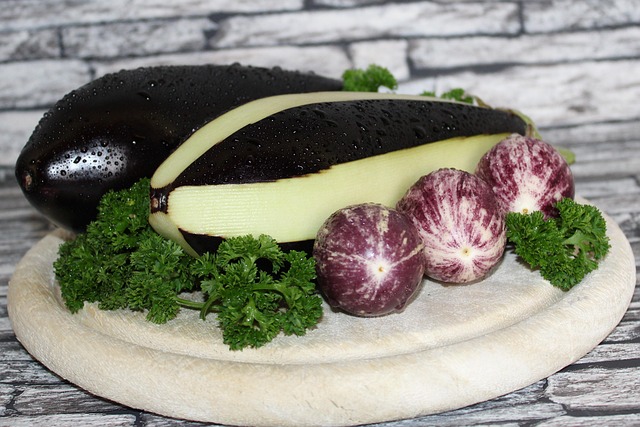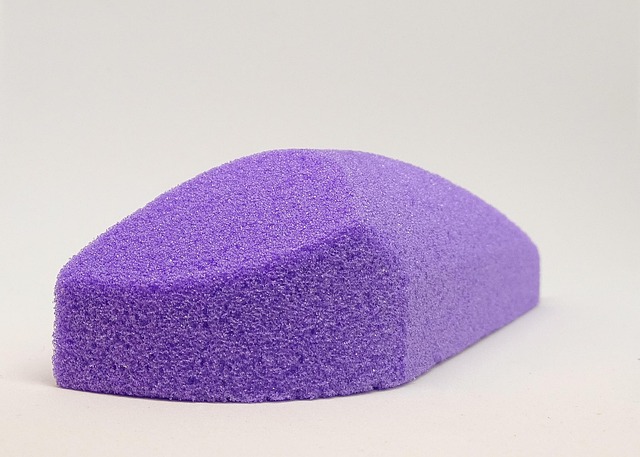Understanding grout stain causes is key to removal. Prioritize safety with protective gear and proper ventilation. Use natural solutions like baking soda, vinegar, or lemon juice for eco-friendly cleaning. Chemical cleaners are powerful but require caution and testing. Steam cleaning offers a safe, efficient method. Professional help is recommended for severe cases. Regular cleaning with mild detergent prevents stain buildup. Avoid harsh chemicals and excessive moisture for grout preservation. Choose appropriate solutions, test on small areas, scrub gently, and rinse thoroughly for successful stain removal.
Tired of unsightly grout stains in your kitchen or bathroom? Removing these can be a challenging yet rewarding task. This comprehensive guide explores effective methods for tackling grout stain removal, from natural remedies to modern steam cleaning techniques. We’ll delve into the causes behind these stubborn marks, discuss safety precautions, and provide a step-by-step approach to achieving pristine grout lines once more. Discover expert tips on choosing between DIY solutions and professional help, plus maintenance strategies to prevent future stains.
Understanding Grout Stain Causes: Kitchen and Bathroom Culprits

Understanding the causes behind grout stain formation is the first step in effectively removing them. In kitchens, common culprits include spills from cooking oils, grease, and acidic substances like citrus juices or vinegar. These substances can penetrate the pores of the grout, leading to stubborn stains over time. Bathroom environments also present unique challenges due to high moisture levels and regular exposure to water-based products like cleaning agents, toothpaste, and soap scum. These factors contribute to the growth of mold and mildew, which can darken grout lines.
Regular cleaning practices play a crucial role in preventing and removing grout stains. Using appropriate cleaning solutions tailored for grout, combined with gentle yet effective scrubbing techniques, can help address existing stains. Preventive measures include promptly wiping up spills, using non-absorbent mats to reduce moisture, and regularly sealing the grout to create a protective barrier against staining agents.
Safety First: Protective Gear for Stain Removal

When tackling grout stain removal, safety should always be your top priority to prevent skin and eye irritation. Before diving into the cleaning process, invest in a pair of protective goggles and gloves. This simple step will shield your eyes from any splashing chemicals or debris, while the gloves ensure your hands remain unsoiled. When dealing with harsh cleaning agents, long-sleeved clothing can also offer an extra layer of protection.
With the right gear in place, you’re ready to remove those stubborn grout lines stains. Always follow manufacturer instructions for any cleaning products and ensure proper ventilation during the cleaning process. Safety measures, when taken seriously, will make your stain removal experience more efficient and comfortable.
Natural Cleaning Solutions for Grout Stain Elimination

When it comes to removing grout stains, there are numerous natural cleaning solutions that can be just as effective as chemical-laden products. One of the simplest and most popular methods involves using baking soda and vinegar. Create a paste by mixing equal parts baking soda and white vinegar, then apply it directly to the stained grout lines. Let it sit for 15-20 minutes before scrubbing gently with a soft-bristled brush or an old toothbrush. The mixture will help break down the dirt and grime embedded in the grout.
Another eco-friendly option is lemon juice, which contains citric acid known to be a natural cleaner. Apply fresh lemon juice to the stained area and let it soak for about half an hour. Alternatively, you can mix lemon juice with baking soda to create a paste and gently scrub away the stains. For tougher stains, consider using hydrogen peroxide as a mild bleach alternative. Always test any natural cleaning solution in a small, inconspicuous area first to ensure it doesn’t cause discoloration or damage to the grout or surrounding tiles.
Chemical Grout Cleaners: Potent but Careful Use Required

Chemical grout cleaners are highly effective in removing stains from grout lines, especially for tougher cases that involve mineral deposits, mold, or mildew. However, their potency requires cautious use to prevent damage to the grout and surrounding tiles. Always follow the manufacturer’s instructions and wear protective gear, such as gloves and goggles, when applying these substances. Test a small, inconspicuous area first to ensure the cleaner doesn’t discolor or etch the grout.
These cleaners can be powerful, so thorough rinsing after application is crucial to wash away residual chemicals and prevent them from drying and becoming more difficult to remove. In addition, some chemical cleaners may emit strong odors, so ensuring proper ventilation during and after cleaning is essential for comfort and safety.
Steam Cleaning: A Modern Approach to Grout Stain Removal

In today’s modern approach to stain removal, steam cleaning has emerged as a game-changer for grout lines in kitchens and bathrooms. This innovative method utilises high-pressure steam to deeply penetrate and dissolve stubborn stains, ensuring an effective clean without harsh chemicals. By infusing hot steam into grouted surfaces, this technique softens and breaks down dirt, grime, and even mold buildup, making it a popular choice among professionals for its efficiency and safety.
Steam cleaning offers several advantages when it comes to removing stains from grout lines. It’s environmentally friendly, as no toxic solutions are required, and it provides a deeper clean than traditional methods. Moreover, steam cleaning is versatile, suitable for various types of grouts and tile materials. This modern approach promises a refreshed and sparkling kitchen or bathroom, leaving behind nothing but gleaming grout lines.
DIY vs Professional Help: When to Seek Expert Assistance

Removing stains from grout lines in kitchens and bathrooms can be a daunting task, leading many to wonder: DIY or professional help? While some stains can be tackled successfully with homemade solutions and a bit of elbow grease, there are instances where enlisting professional assistance is the best course of action.
Heavily stained or discolored grout, especially in hard-to-reach areas, may require specialized tools and knowledge that a DIY approach cannot match. Professionals have access to potent cleaning agents and advanced techniques, ensuring faster results and minimizing damage. Additionally, seeking expert help is advisable for large-scale grout stain removal projects, as it saves time and effort, leaving you with a pristine and professional finish.
Maintaining Clean Grout: Prevention is Key

Maintaining clean grout lines between tiles in kitchens and bathrooms is an ongoing process, but prevention can go a long way in reducing the need for frequent stain removal. Regular cleaning with a soft brush and mild detergent can help keep grout lines free from dirt and grime buildup. This simple routine will also make it easier to spot new stains early on, allowing you to address them promptly before they set in.
Avoiding harsh chemicals and excessive moisture is essential to preserving the integrity of your grout. Many common household cleaners can damage the grout over time, making stain removal more challenging. Opting for natural cleaning solutions or pH-neutral products designed specifically for grout care can help maintain its color and texture. Additionally, keeping surfaces dry after cleaning will prevent mold and mildew growth, ensuring a cleaner and healthier environment in your kitchen or bathroom.
Common Mistakes to Avoid During Stain Removal

When tackling grout stain removal, it’s easy to make mistakes that can lead to less-than-satisfactory results. One common error is using harsh chemicals or abrasive tools on grout, which can damage the tile and grout itself. Grout is a porous material, so aggressive cleaning agents can penetrate deeper, making stains more difficult to remove later. Additionally, always ensure proper ventilation when working with any cleaning products to avoid inhalation of harmful fumes.
Another blunder to steer clear of is skipping the pre-cleaning step. Before attempting to remove any stains, it’s crucial to sweep or vacuum away loose debris and grime. This initial preparation ensures that your cleaner can effectively target the stained areas without spreading dirt further. Remember, patience is also key; rushing the process might lead to incomplete stain removal, requiring more intensive cleaning down the line for the same grout lines.
Before and After Results: A Visual Guide to Successful Grout Stain Elimination

Before and After Results: A Visual Guide to Successful Grout Stain Elimination
Seeing the transformation from stained grout lines to sparkling, pristine surfaces can be incredibly rewarding. When it comes to removing grout stains, a systematic approach and the right tools make all the difference. Start by identifying the type of stain and choosing an appropriate cleaning solution. For organic stains like coffee or grease, enzymatic cleaners or baking soda blends are effective. In contrast, hard water deposits and mineral stains might require acidic solutions like vinegar or citric acid.
After preparing your cleaning solution, test it on a small, inconspicuous area to ensure it won’t damage the grout or surrounding tiles. Once you’re confident in its safety, apply the cleaner liberally, scrub thoroughly with an old toothbrush or grout brush, and let it sit for the recommended time. Rinse well, then dry completely to assess the results. The “before” and “after” comparison is a powerful visual guide to the success of your stain removal efforts.
